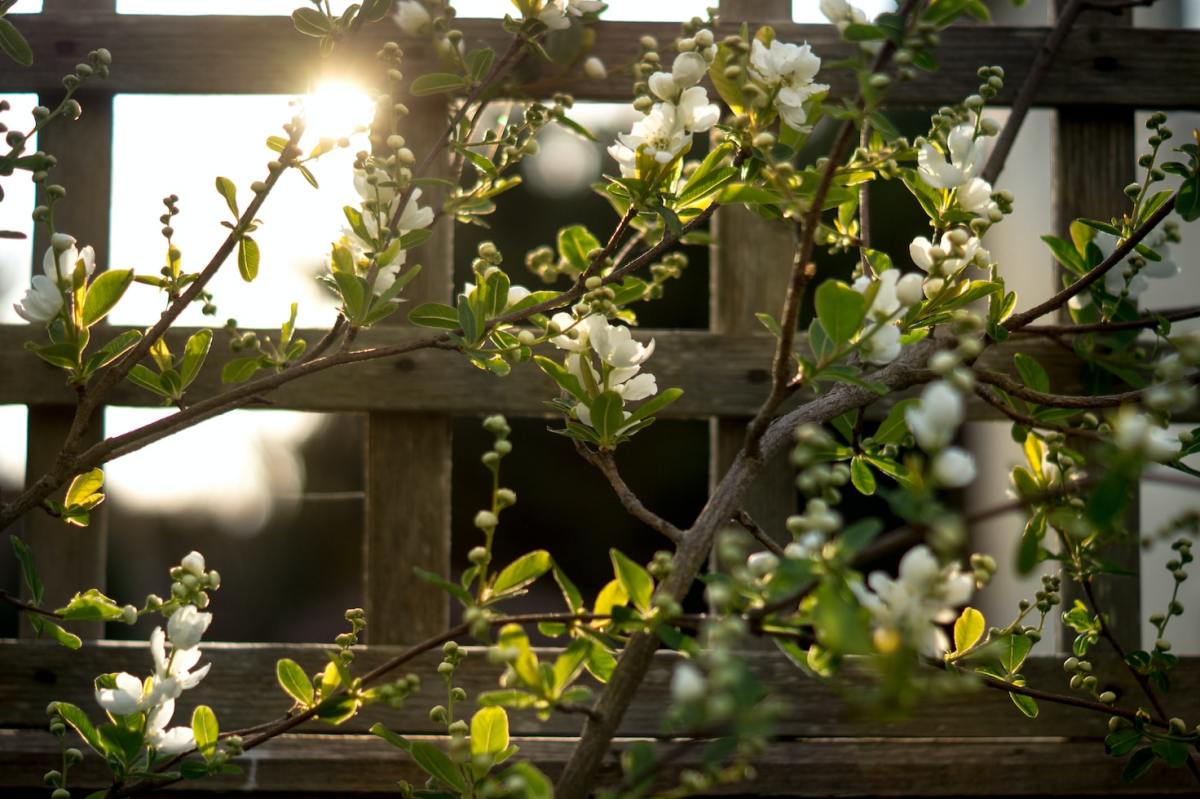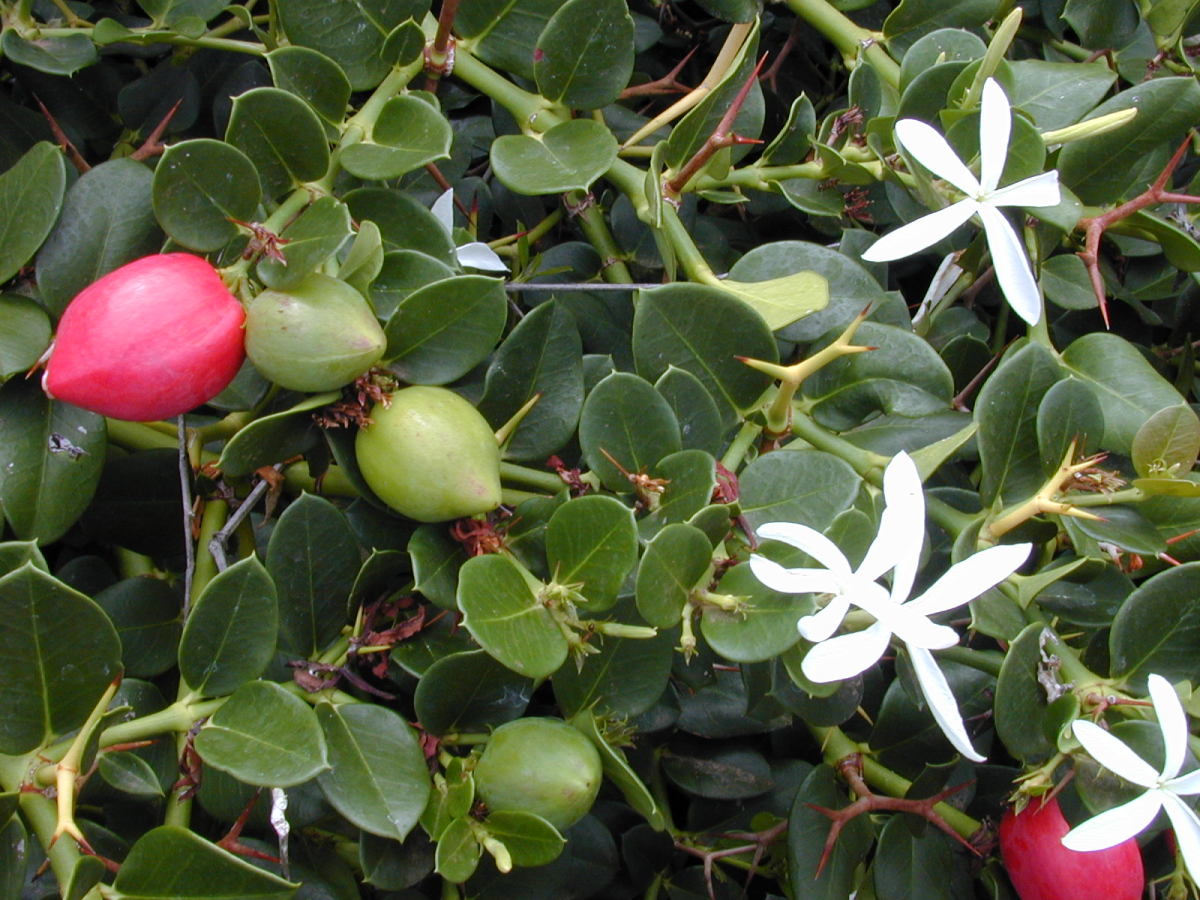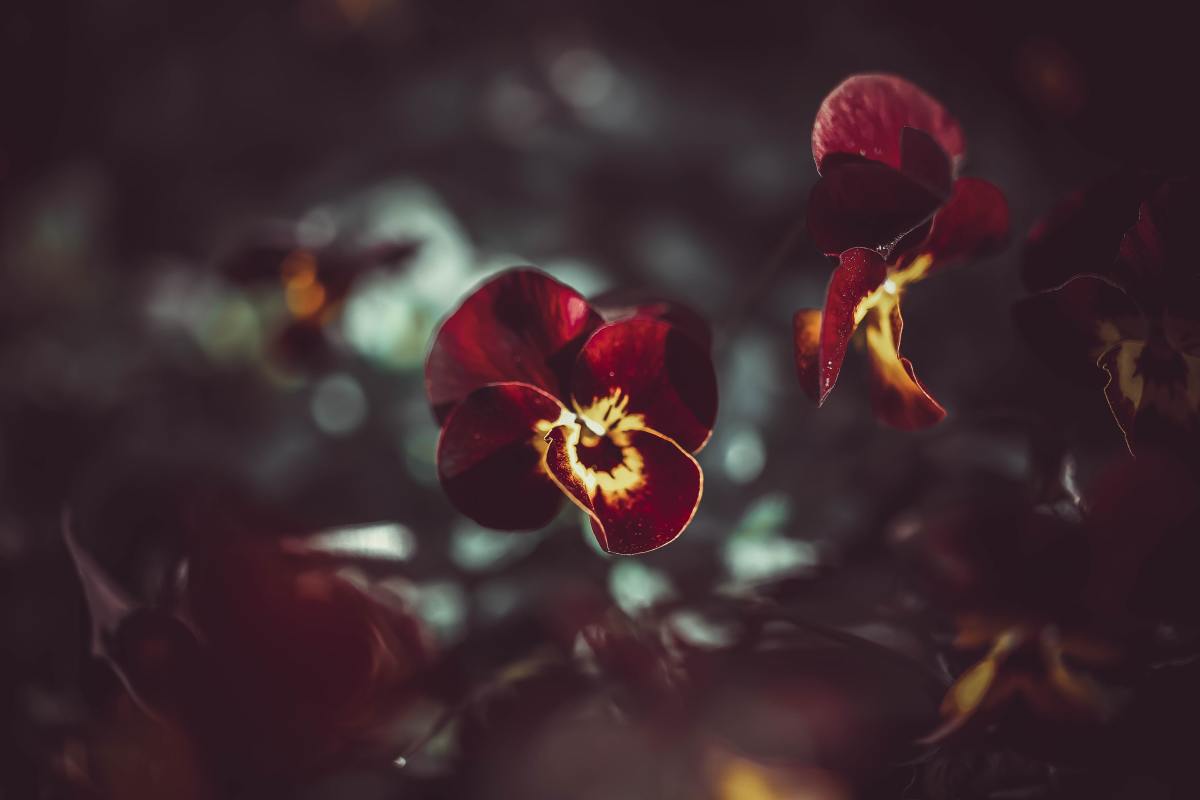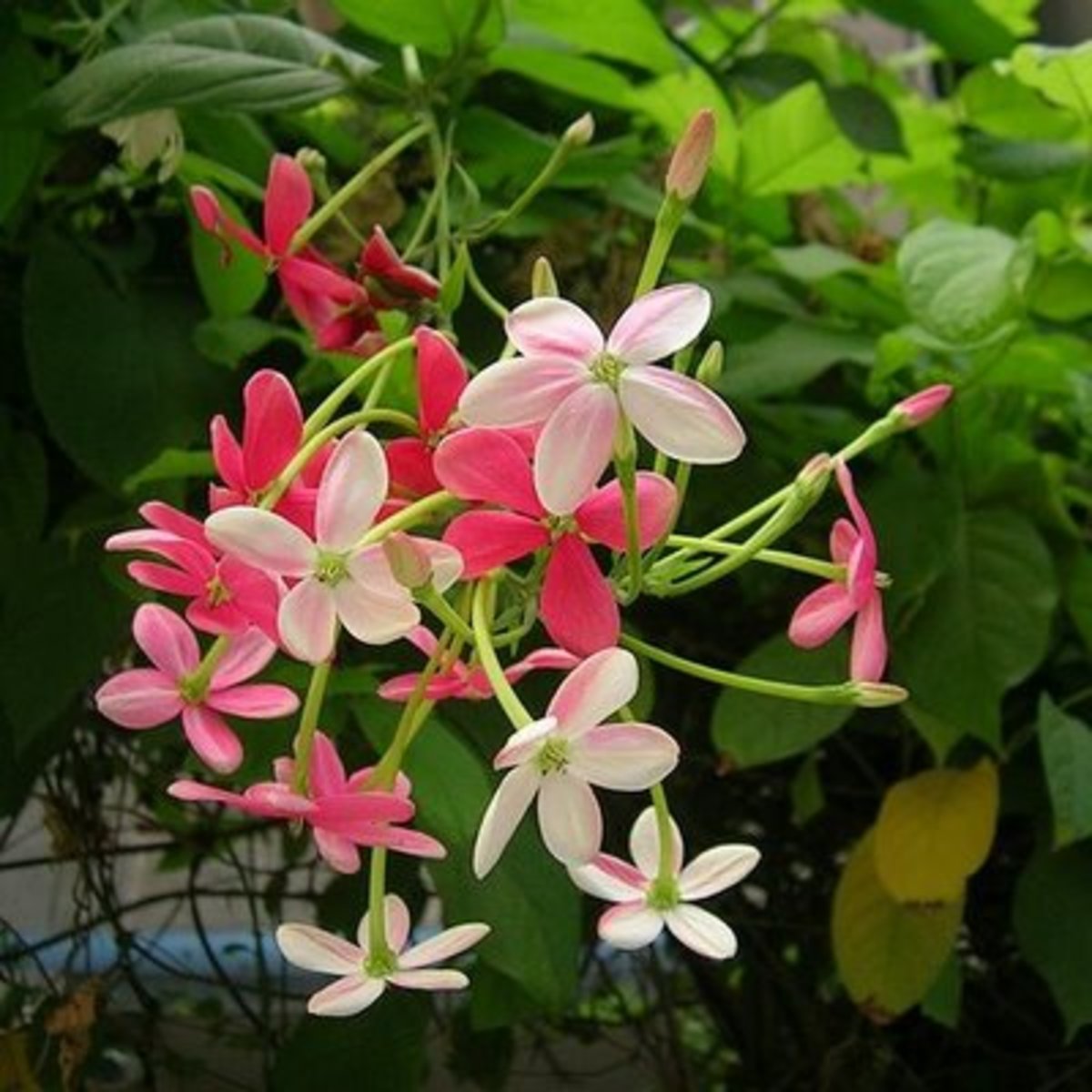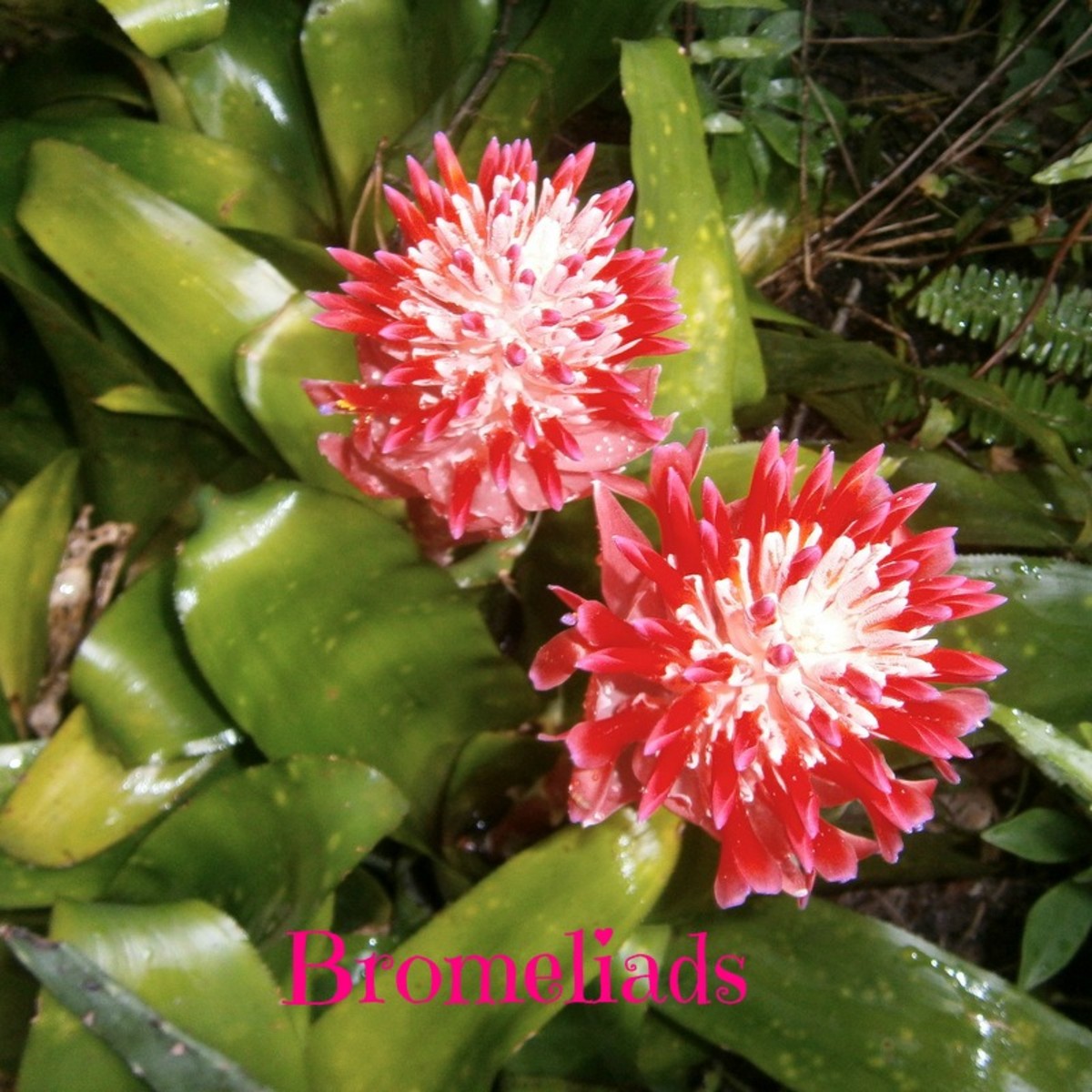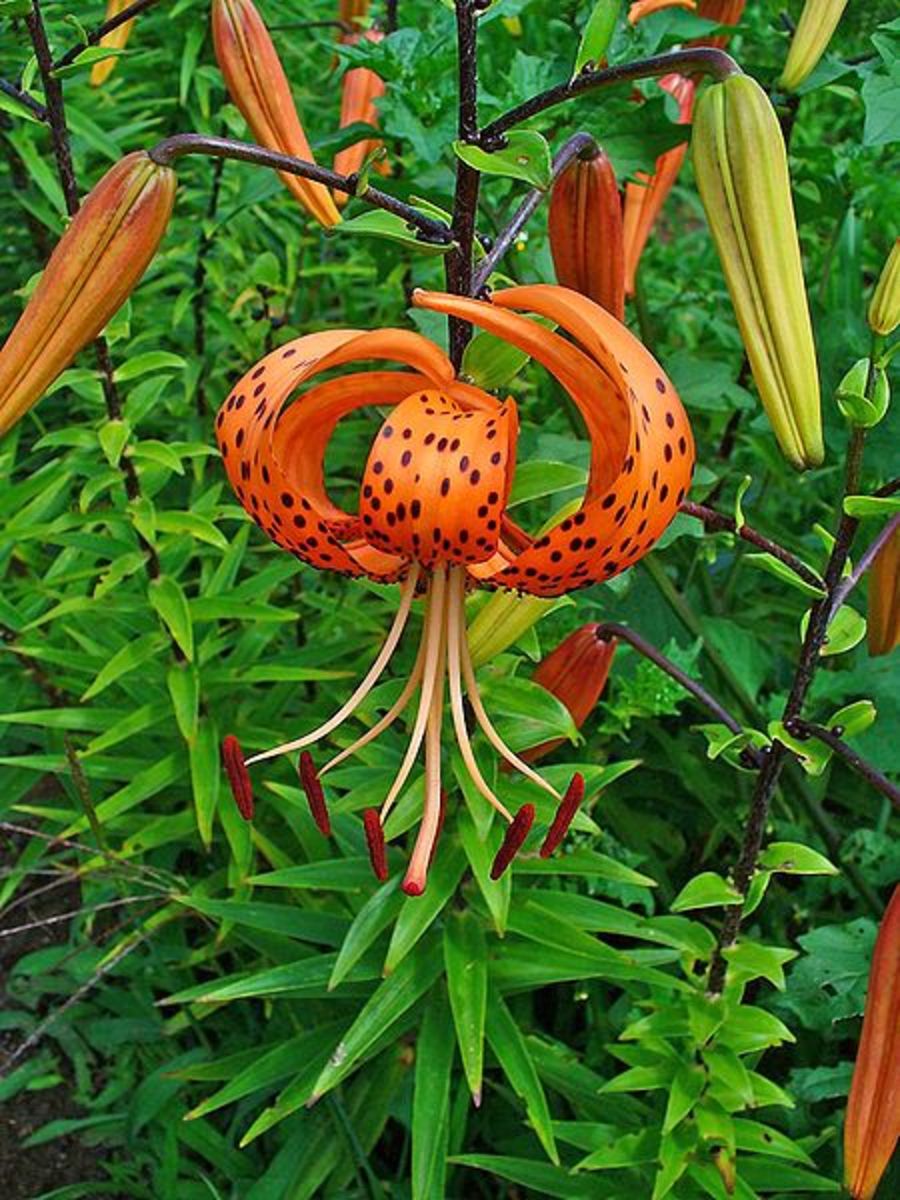Plant Profile: Natal Plum (Carissa macrocarpa)
Common Names: Natal Plum, Amantungula, Noem-Noem, Large Num-Num
Scientific Name: Carissa macrocarpa
Synonyms: Carissa grandiflora
Family: APOCYNACEAE
The Natal Plum (Carissa macrocarpa) is an evergreen woody perennial shrub to small tree, reaching up to 3m high by 3m wide.
Characteristic features of Natal Plum
The Natal Plum has attractive, dense, dark green, glossy, oppositely arranged leaves that are ovate in shape and leathery. These thick leather leaves are tolerant of windy conditions and coastal salt spray. Forked thorns 3-5cm long along the branches. Natal Plum has large, white, star-shaped blossoms with a scent reminiscent of gardenias or orange blossoms. These are followed by attractive bright red 5cm long plum-shaped fruit. Fast growing. Drought tolerant. Non-invasive root system. Blooms almost all year long with fruit and flowers being present simultaneously most of this time.
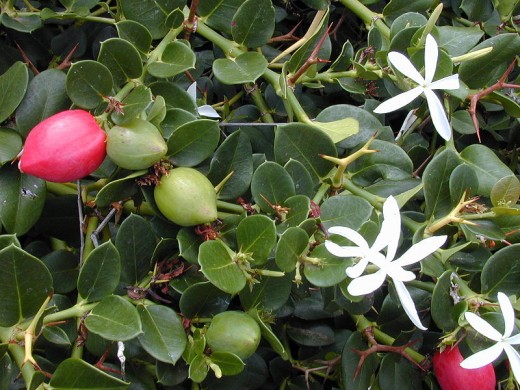
Horticultural uses of Natal Plum
Carissa macrocarpa is an excellent plant for coastal gardens as it's tolerant of salty soils. Due to its dense foliage it makes a great informal hedge or screen plant. Fierce thorns make it a particularly effective barrier as well. It was used under windows in housing developments in South Florida during the 1970s to deter intruders. Suitable for growing in containers. Sprawling cultivars such as 'Prostrata' and 'Horizontalis' are available and can be used as ground covers. Dwarf thornless cultivars such as 'Boxwood Beauty' and 'Nana' are also available. This plant has also been used as a bonsai plant.
Cultural uses of Natal Plum
The Fruits of Carissa macrocarpa are edible when totally ripe (otherwise toxic) and taste like sweet cranberries. Flesh may be mealy and have a latex taste when eaten raw however this can be improved by cooking with sugar. The fruits can be used to make or added to desserts, cakes, sauces, jams, jellys, chutneys and fruit punches. Because of their large thorns, these plants have also been grown and shaped into livestock proof hedges.
Limitations of Natal Plum
Carissa macrocarpa should not be planted in high pedestrian traffic areas due to its sharp spines. All parts of plant (potentially including the seeds) are toxic except for the flesh of the ripe fruits so this plant should be avoided if young children are of a concern. Natal plum prefers growing in full sun but tolerates light shade. Prefers a sandy, well drained soil. Due to the thorns, pruned branches should not be left where they can be stepped on.
Ideal growing conditions for Natal Plum
Native to the South African province of KwaZulu Natal, Carissa macrocarpa is naturally found growing on sandy soils. Average temperatures in this province ranges from 16-25oC in Winter and 23-33oC in Summer. Average rainfall is 828mm annually, concentrated from December through to March.
Natal Plum plant culture
Propagation of Natal Plum is typically from cuttings to maintain characteristics, however they may be grown successfully from seed. Responds well to close pruning and is easily kept manageable at any size. Prune to shape as required. Many cultivars will produce some branches that revert back to a wild form and it's essential to prune these off frequently to prevent the cultivar from reverting back completely. Heavy gloves and well-oiled implements should be used when pruning to prevent injuries or jamming from sticky toxic latex in stems. This plant is a heavy feeder that prefers regular monthly applications of any balanced liquid fertilizer during the growing season. Pytophthora dieback is common and the pathogen responsible for its effect may be reduced by spraying with phosphite fungicides at a rate and according to the instructions on the product label.



